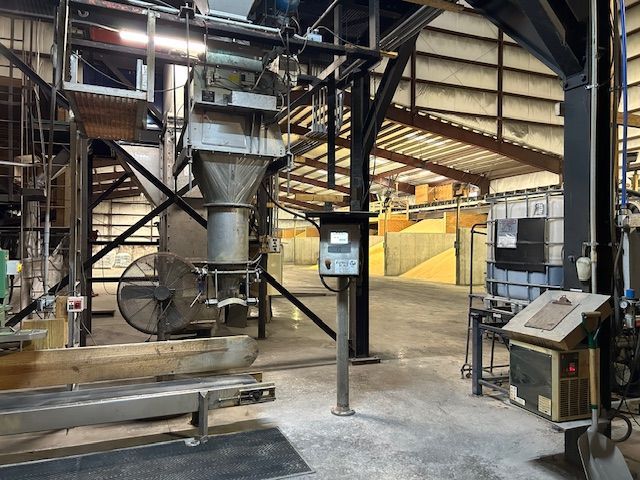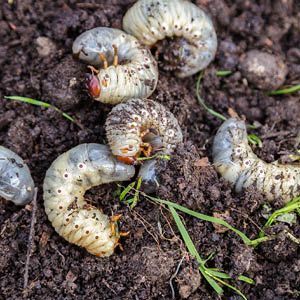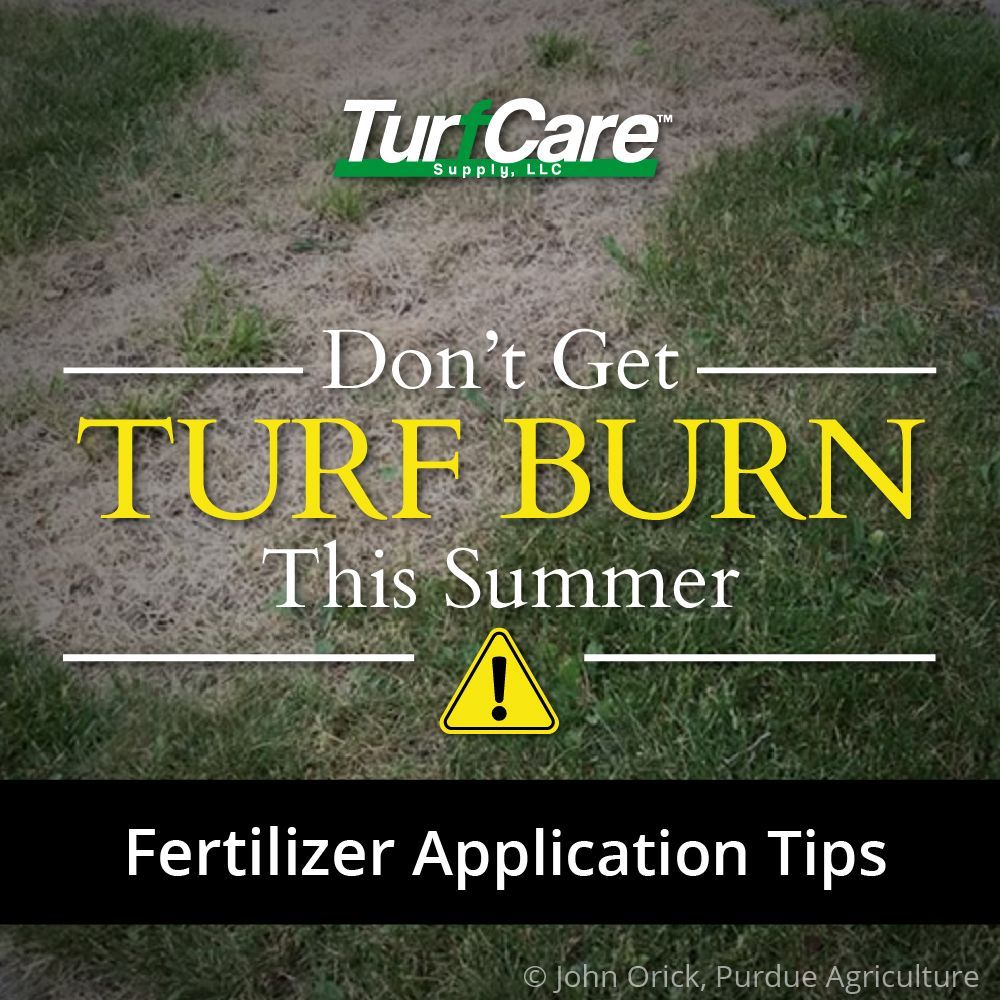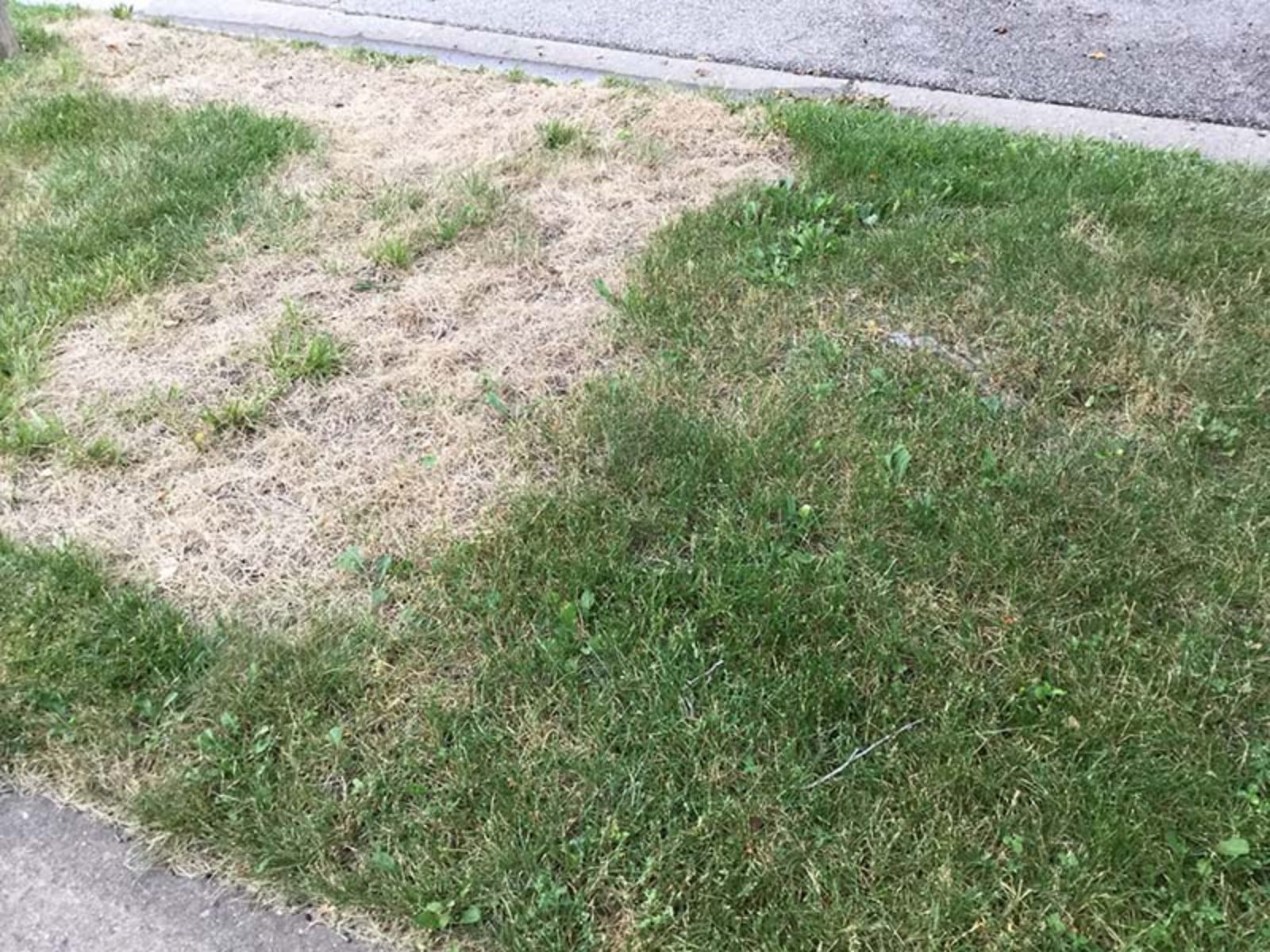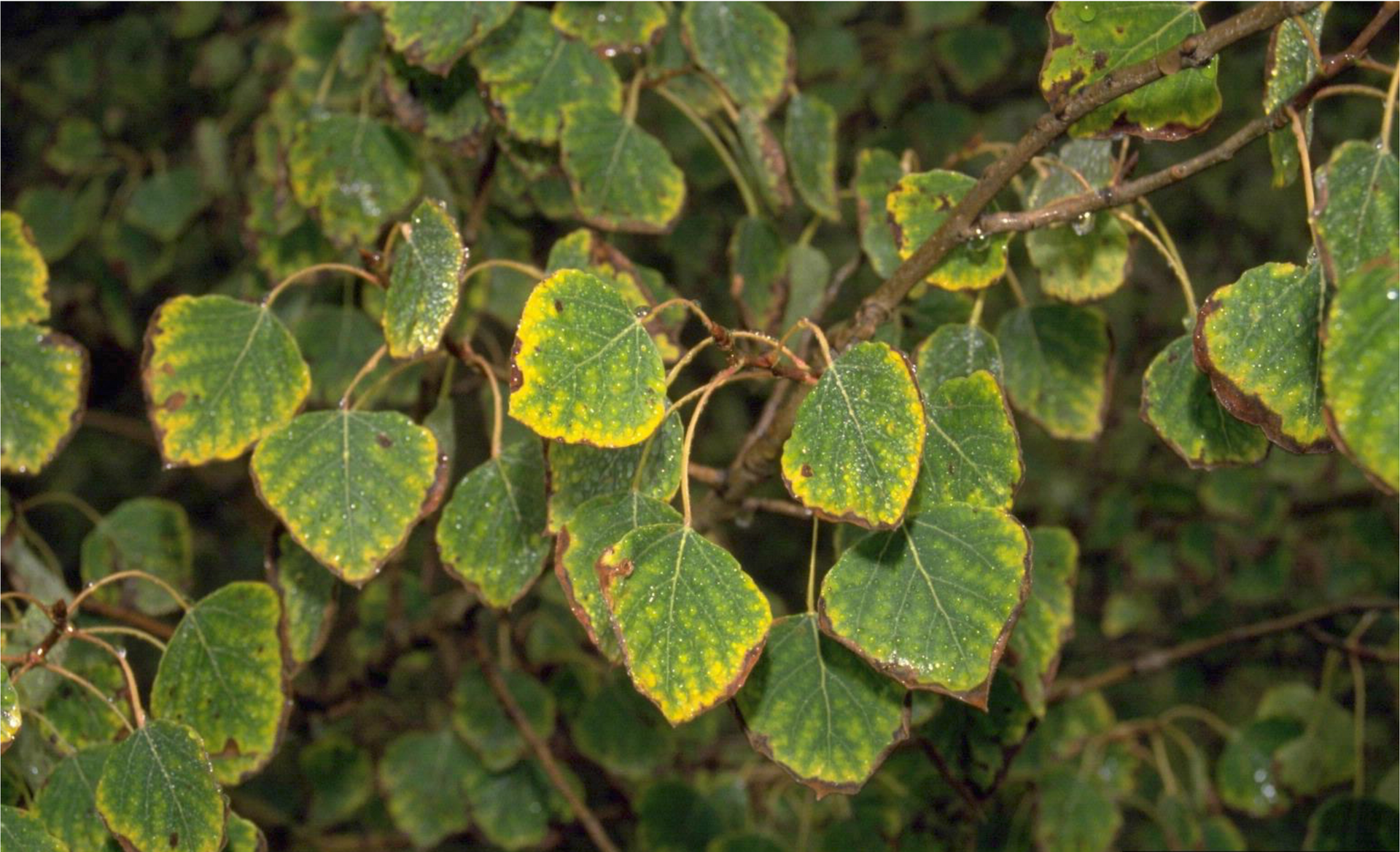Introduction
It’s common knowledge that applying too much fertilizer containing high percentages of readily available nitrogen and water soluble nutrients can result in burn damage to plants, but did you know that damage can still occur even if your application rate is correct? Applying the right product at the right rate, but at the WRONG time can have disastrous consequences.
Now that summer has arrived, soaring temperatures and mild to severe drought conditions are on everyone’s mind. Situational awareness of your climate, current weather conditions, and region’s extended forecast, coupled with a little chemistry knowledge regarding the nature of ‘fertilizer salts’ will give your turf and ornamentals the best possible chance of flourishing during the summer months!
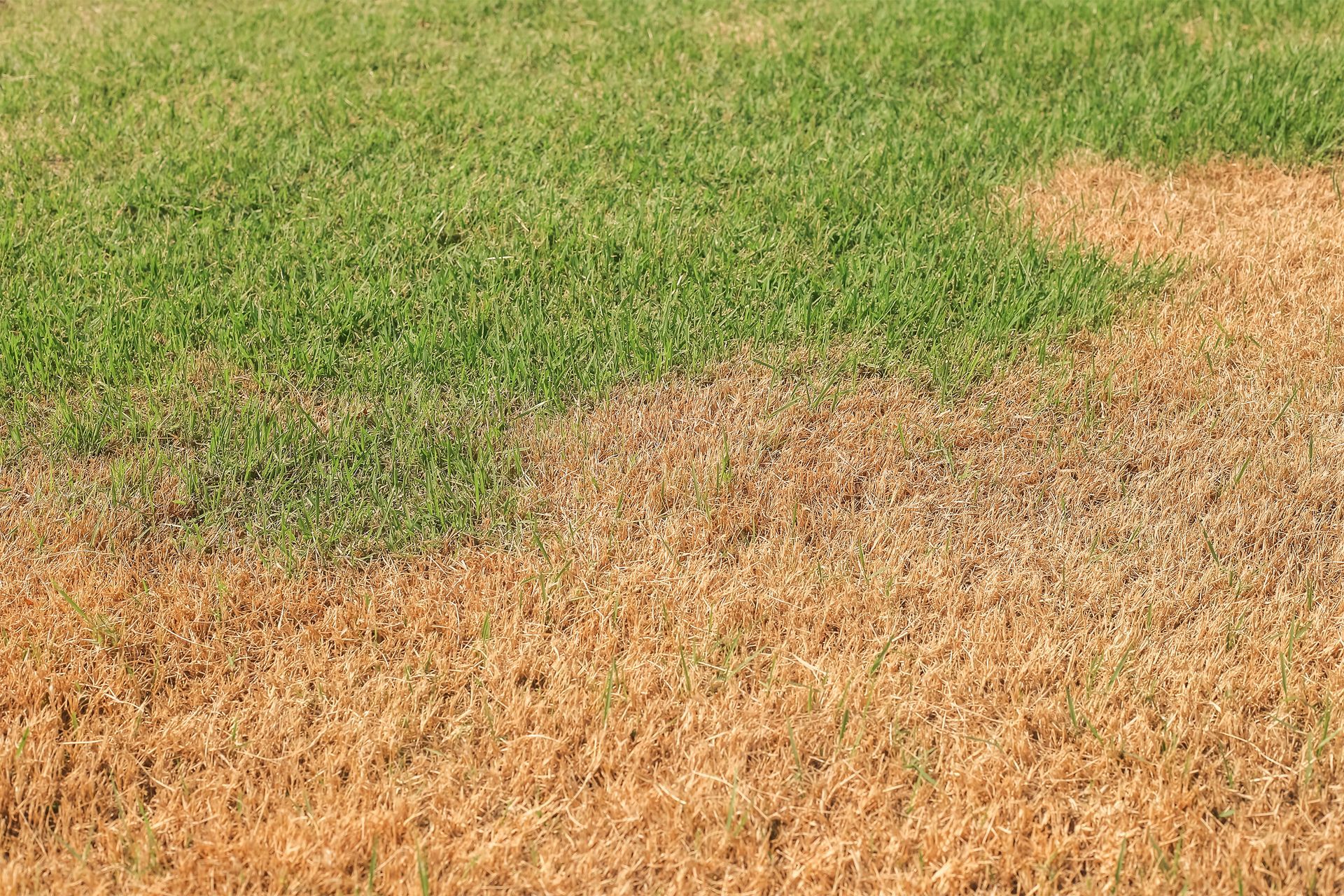
Turf experiencing drought stress.
What are ‘fertilizer salts’ and how do they affect plants?
Most of the raw materials found in a balanced fertilizer blend exist in salt form. A salt is an ionic compound, which means it is comprised of smaller molecules with different charges. If you remember your days of high school chemistry, opposites attract, so cations (ions with a positive charge) will bond to anions (ions with a negative charge). If the charges are equal on both sides, they will cancel each other out to form a stable compound. For example, muriate of potash, otherwise known as potassium chloride, has the formula KCl. K+ has a charge of +1 and Cl- has a charge of -1. Since the charges are equal and opposite, the final product is a stable salt that is commonly used as a fertilizing compound.
One of the properties of many salts is their ability to be dissolved in water. This property is critical for plant nutrient uptake. However, many salts are also hygroscopic, which means they readily absorb and hold water in their dry forms. In biology, salts can draw water out of cells. The more salt there is in the vicinity of water, the stronger the pull. In the presence of excessive fertilizer salts, severe plant cell damage and death can occur. We commonly refer to this as ‘plant burn.’ This is the same burn that happens when fertilizer blends containing 100% readily available nutrients are overapplied.
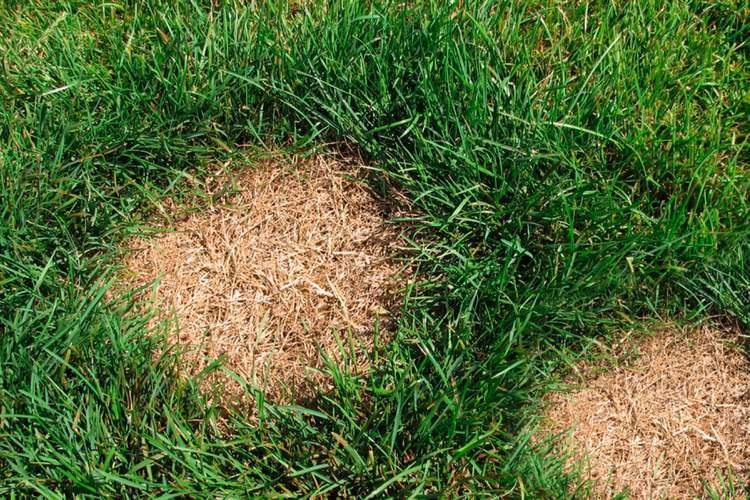
Plant burn due to over-applied fertilizer with 100% readily available nutrients.
Image Source: TheSpruce/ K. Dave
As a side note, many liquid fertilizer ingredients, as well as countless pesticide active ingredients also exist in salt form, and they too can cause the same kind of plant burn damage when misapplied.
What ingredients in a fertilizer blend are considered salts?
Again, many of the most common ingredients in fertilizer blends exist as salts. These include:
- All macro, secondary, and micronutrient sulfates
- Phosphates
- Nitrates
- Chlorides (i.e. ammonium nitrate, calcium sulfate, diammonium phosphate, etc)
Of note, urea is not considered a salt because it does not readily disassociate into cations and anions in solution, however urea can still damage plant cells because it is extremely hygroscopic.
What environmental conditions increase the risk of plant burn?
Prolonged heat and drought can create environments where fertilizer salts can be particularly damaging. In general, the higher the concentration of fertilizer salts dissolved in water, the greater the burn hazard to both above and below ground tissues. Above the ground, high concentrations of fertilizer salts that contact foliar tissues can lead to yellowing, browning, curling, and necrosis (this is true of both granular and liquid fertilizers). Below the ground, when soils dry out, reconstituted salts tend to concentrate in pockets. When roots encounter these pockets, the high concentration of salts in these pockets can damage localized root tissue and be transported through the roots and the vascular system to other plant tissues, causing additional damage along the way.
When soils remain moist and plants are well hydrated, fertilizer salts pose no threat when applied at the correct rate using proper application practices.
LEFT: Turf damaged by fertilizer burn
RIGHT: Salt damage on quaking aspen
Image Sources: LEFT: John Orick, Purdue Agriculture, ag.purdue.edu
RIGHT: William Jacobi, Colorado State University, Bugwood.org
How to Avoid Fertilizer Salt Burn
Summer Application Tips:
- Read the entire fertilizer label and pay special attention to the application instructions section.
- Delay applications of fertilizers containing high percentages of salts and 100% readily available nutrients under extreme heat and drought conditions.
- Do not apply fertilizer to cool season grasses that have gone dormant under extreme heat and drought conditions. Wait for temperatures to cool and regular rain to return to the forecast.
- Only apply fertilizer to treatment areas that can be readily irrigated. For treatment areas dependent on natural irrigation, ensure a moderate rain event is likely within 48-72 hours of application.
- Use products with higher percentages of coated controlled release nutrients (i.e. polymer or sulfur coated products). The coatings around these granules will help shield sensitive plant tissues from the hydroscopic nutrient cores.
- Use products supplemented in part or in whole with nutrients complexed with organic (carbon-based) sources to reduce exposure to fertilizer salts during times of extreme abiotic stress. Examples include biosolids, composts, and various ‘meals’ (i.e. feather meal, soybean meal, etc).
- Incorporate specialty biologically-derived products such as humic substances, kelp extracts, and microbial metabolites in conjunction with a moderate reduction (10-20%) in the application rate of 100% readily available nutrients. These technologies are non-burning and gentler on plants during times of extreme abiotic stress and can assist with stress tolerance and recovery.
For biologicals or fertilizers enhanced with biologicals including humic and AMP-XC™ products available, please visit TurfCare’s online Product Catalog.
For green industry professionals or others interested in ordering Turfcare products, please contact our Customer Service to find a distributor near you.
Photos:
Turf Care Supply - TurfReport Blog
